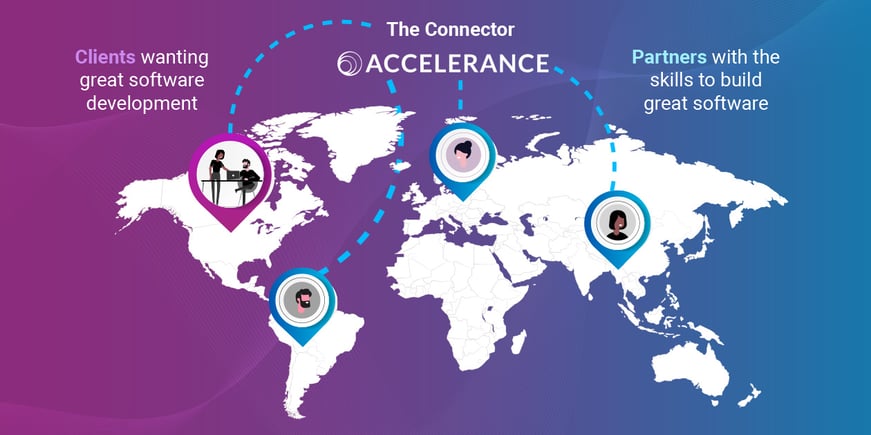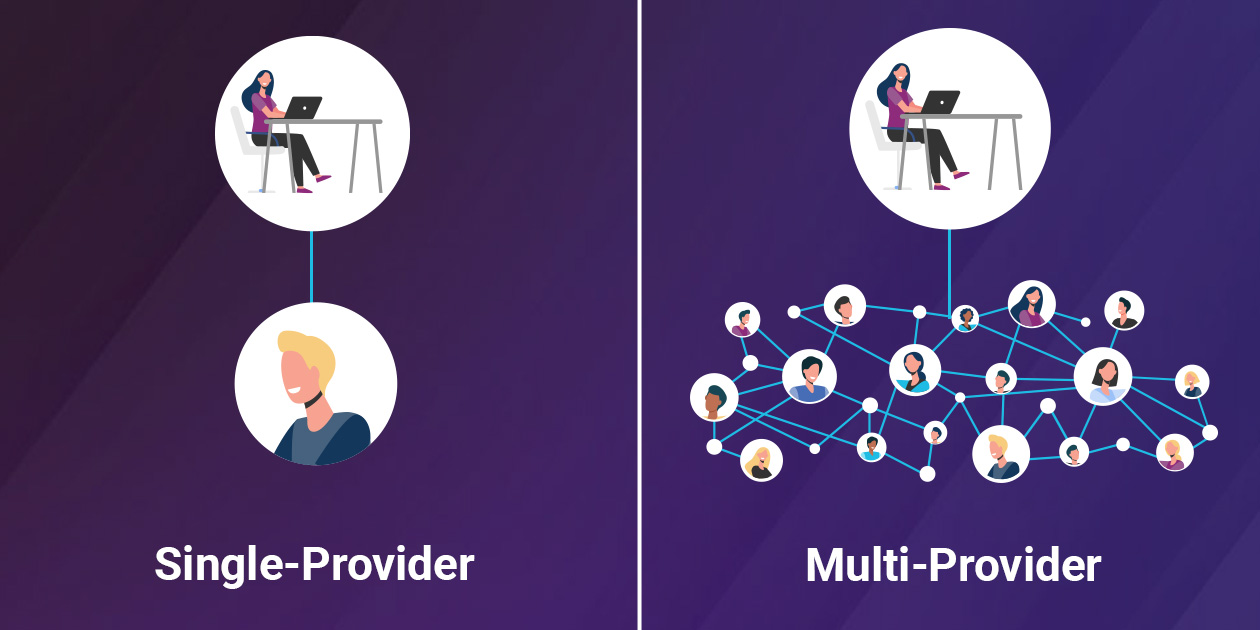-
Services
-
Software Project Delivery
-
Services
-
Solutions
-
Technologies
-
-
Network
-
Discover
-
Regions
-
Industries
-
Must-Read Guide
-
2025 Global Software Outsourcing Rates and Trends GuideDon't get left behind—discover the latest rates and strategies for success in the global software development outsourcing market in 2025.
-
-
-
Resources
-
Our Resources
-
New eBook
-
 The True Cost of Software DevelopmentHidden costs can wreck your budget. Our new eBook breaks down the true cost of outsourcing—get your copy to stay ahead.
The True Cost of Software DevelopmentHidden costs can wreck your budget. Our new eBook breaks down the true cost of outsourcing—get your copy to stay ahead.
-
-
Webinar On-Demand
-
Stop Chasing Low Hourly Rates: Unlock the True Value of Offshore DevelopmentReduce development costs without compromising quality.
-
-
Featured White paper
-
Unlock Offshore Success with Accelerance AlignDiscover how Accelerance Align helps businesses overcome software outsourcing challenges through expert guidance, cultural integration, and tailored strategies.
-
-
-
About
-
About Accelerance
-
Our History
-
Accelerance: Our HistoryThere's great talent everywhere and great teams everywhere, which is the basis of the Accelerance model.
-
-
Software Without Borders
-
New Episode Every Week!Tune into our podcast Software Without Borders, the essential listen for technology leaders and business owners in the software sector who crave insights from the industry’s top minds.
-
-
Andy's Book
-
Synergea: A Blueprint for Building Effective, Globally Distributed Teams in the New Era of Software DevelopmentPeople are first and locations are secondary when it comes to software development success.
-
-
February 6, 2023
Managing Risk across a Turbulent World: The Power of All-sourcing
Written by: Troy Hiltbrand
Each quarter, Gartner publishes a study called the Emerging Risks Report. Its findings are based on conversations with and polls of risk professionals and managers around the world. It identifies patterns in the areas of the economy, technology, the talent environment, the climate and politics around the world, spotlighting areas that should be top of mind in risk planning activities.
In Q4 2022, the report found that although there were common risks around the world, various regions experienced the impact differently:
- In North America, the top risk was stagflation and the increasing costs of goods, services, and talent.
- In Asia, the top risk was currency volatility and its impact on foreign and domestic trading activities across the region.
- In Europe, the escalation of the conflict in Ukraine topped their list with its on the European energy markets. The Ukrainian conflict and its global impacts show up high on the lists of most of the regions, but none higher than that of Europe.
As a global business, managing risk requires a sound understanding of the regions in which you do business. Whether they are supply-side or demand-side risks, challenges across the globe can have significant impacts on your ability to run your business. Your mitigation steps need to take into consideration how to shift resources and operations from higher-risk areas to lower-risk areas.
All-sourcing
One of the risk-mitigation strategies that companies are utilizing today is the concept of all-sourcing. In the past, companies have looked at individual strategic offshore or nearshore partners to provide them with the talent that they need to execute their IT projects.
Many companies saw a tremendous opportunity and potential with highly skilled IT partners in Ukraine and set up strategic partnerships with companies in Kharkiv, Lviv, Dnipro, and Odesa. In 2021, when Russia invaded, these companies, who had gone all in with this strategy, felt the pain of not knowing what would happen to their friends and colleagues who were caught in the conflict and what it would mean for their business continuity plans. These companies and their strategic partners had to quickly reorganize and reposition some of their human resources to work in neighboring countries in Europe to keep operational. This pointed out the painful truth that having all of your resources from a single location can be a risky decision.
With all-sourcing, companies find partners in different regions of the world and balance their portfolios to minimize their risks. There are four main regions that are considered in the evaluation, North America, Latin America, Europe, and Asia.
- North America has traditionally been relatively stable from a political and economic standpoint, but the costs of partnering with North American companies remain one of the highest in the world.
- Latin America has provided resources that are a good cultural fit with U.S. companies and mid-range prices but has also seen some political and economic instability. Markets, such as Argentina and Venezuela, have had currency instability which has at times proven beneficial and at other times proven very dangerous for businesses with operations there.
- Europe in the recent past has been a good balance with strong skills, low wages, and a stable economic and political environment. Although there are countries outside of Ukraine, such as Bulgaria, Poland, Hungary, and even Portugal, they are all feeling the direct effects of the conflict in Ukraine.
- Asia has the distinct challenge of being geographically situated in a way that the overlap of resources for collaboration can seem daunting. With so much of the world's population located here, there is a tremendous amount of talent available across Asian countries. Language and cultural barriers have often been a challenge for U.S. countries. Although COVID had a significant global impact, markets such as China are still being directly impacted more than almost any other nation in the world. The Chinese economy is so large and impactful, that its economic challenges are felt across the region.
With all-sourcing, the concept is to accept that there are risks in each of the regions that will have a negative impact, but that balancing activity across the regions can provide for the ability to shift work as needed to best accommodate for this risk. Having strategic resources in Latin America, Europe, and Asia allows for business continuity if one of them is impacted by an economic, political, or climate-related disaster.

All-sourcing Models
There are two approaches to all-sourcing: single-provider or multi-provider.
With the single-provider model, you choose one strategic partner. They are configured with resources across multiple markets. They take care of balancing of resources internally across the regions and can shift work on an as-needed basis. This can be an effective method. It shifts the risk management almost completely to that provider. This requires a high level of trust with that partner. One key consideration with a single-provider model is the location of management and the strategic partner's headquarters. The assumption has to be that in the event of a crisis that those making the resource-balancing decisions are available and have the capacity to make and execute those decisions. With a single-provider model, you will be relying on foreign management of local resources in a region. This often results in decisions being made without a deep, intimate knowledge of the region, including its political and economic environments.
With the multi-provider model, you can keep control of the aspect of balancing resources in-house by leveraging multiple strategic partners in different regions. You have to maintain these strategic relationships yourself, but you get the benefit of knowing that you have strong management partners who are native to the region and have a deep understanding of resources and the political and economic environments.

Product-Oriented Organization
One of the greatest challenges associated with the multi-partner model is finger-pointing and blaming, which can result in distrust and toxicity within the team. Using multiple companies on the same project, filling different roles, and trying to work together can often result in territoriality and a breakdown of communication and collaboration within the team.
One mechanism that can be leveraged to help alleviate team infighting is to use a product-oriented organization. If the organization is structured with groups supporting a specific products, you are able to align each strategic partner with a unique product. This allows you to grant them more autonomy and control over the strategy and evolution of the entire product. When you do this, the interactions between product teams operate in a way that is more inline with how multiple external software-as-a-service (SaaS) providers would interact. You can draw clearer boundaries around roles and responsibilities and set all parties up for success.
Many organizations that use a product-oriented organization leverage a matrixed accountability structure. They establish product owners and product managers who liaise with the strategic partner and guide the evolution of the product. Functional leaders within the organization hold partners accountable for areas of architecture, operations, cyber security, and quality. Internal resources can be associated with the functional organization or can be temporarily or semi-permanently assigned to a product along with resources from a strategic partner.
Final Thoughts
The world today is a risky place to do business. It requires strategic planning to account for these risks and agile execution to accommodate when a crisis strikes. Many companies are looking towards the concept of all-sourcing as a risk mitigation strategy, partnering with resources from different global regions to take advantage of each of their significant benefits, while minimizing their economic, political, and geographic limitations.
Embarking on an all-sourcing journey can be greatly facilitated through the use of the right partner. Accelerance is the solution. Unlike the single-partner all-sourcing model, Accelerance represents multiple different partners around the world. With vetted partners in each region, Accelerance offers up a unique service. Accelerance consultants can help match you, free of charge, with a company or set of companies that can best meet your needs to accomplish your business targets and at the same time balance your geopolitical risks.
If you need a single strategic partner with resources in multiple locations, Accelerance can help you craft the right solution. If you want multiple local partners in different regions that will allow you to do the balancing yourself, Accelerance can help you with putting together that model.
-
Recently Published Articles
View All Posts
Best Practices
September 22, 2023 | Rich Wanden
The Nearshoring Trend: Why Businesses Are Choosing to Keep Software Development Closer to Home
Software Outsourcing Destinations
May 18, 2022 | Andy Hilliard
EYES ON ASIA: Refocusing on the world's top market for low-cost, quality software outsourcing
Best Practices
September 13, 2022 | Accelerance Research Team
Indispensable Insights: Your Go-to Guide for 2023 Software Outsourcing Management
Subscribe to email updates
Stay up-to-date on what's happening at this blog and get additional content about the benefits of subscribing.
